100th Anniversary Great Nave Tour at the Cathedral of St. John the Divine
Celebrate the 1925 construction of the stunning nave inside the world's largest Gothic cathedral!


Central Park‘s North End will be getting a much-needed restoration and reconstruction, and the much-beleaguered Lasker Rink & Pool will be demolished and completely rebuilt in a more naturalistic setting. The whole project will be to the tune of $150 million, $100 million of it raised by the Central Park Conservancy that manages the park, and $50 million the City of New York. The discrepancy between the north end of Central Park and the rest has been made even more stark following the completion of the restoration of the Ravine landscape and Loch watercourse in the North Woods in 2016, and other high-profile projects further south like the re-opened Belvedere Castle.
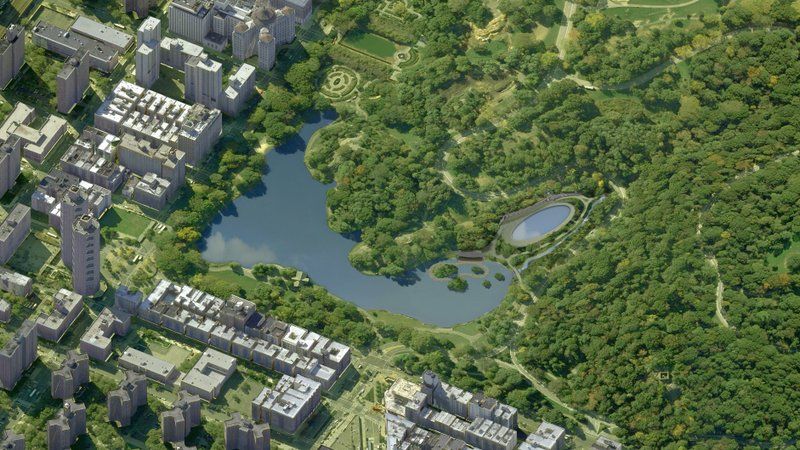
Central Park restoration plan for the North End. Rendering courtesy Central Park Conservancy
Equity was top of mind at the press event yesterday, held at the Charles. A. Dana Discovery Center, a restored boat house on the Harlem Meer, one of the celebrated achievements during the restoration efforts of the 1980s and early 1990s in the northern section of the park. “We are eager to see how this magnificent new project will improve the lives of all in New York,” said Tom Kempner, Chair of the Central Park Conservancy Board. NYC Parks Commissioner Mitchell Silver said that the plan “helps make Central Park more open, accessible and enjoyable more than ever” and that the project has support of the City’s commitment to equity through the creation of a new pool and rink “that will better serve Harlem and East Harlem residents, and those who visit [from] Northern Manhattan and the Bronx.” Commissioner Silver also spoke on how the project was developed with community input, designed to rejoin communities and water bodies that have been separated by revisions to the original Central Park design, and noted that as a regular runner through this area most people are not aware of the waterfalls and stream that connects into the Harlem Meer. Manhattan Borough President said the plan will ensure that all neighborhoods will have full access to Central Park.
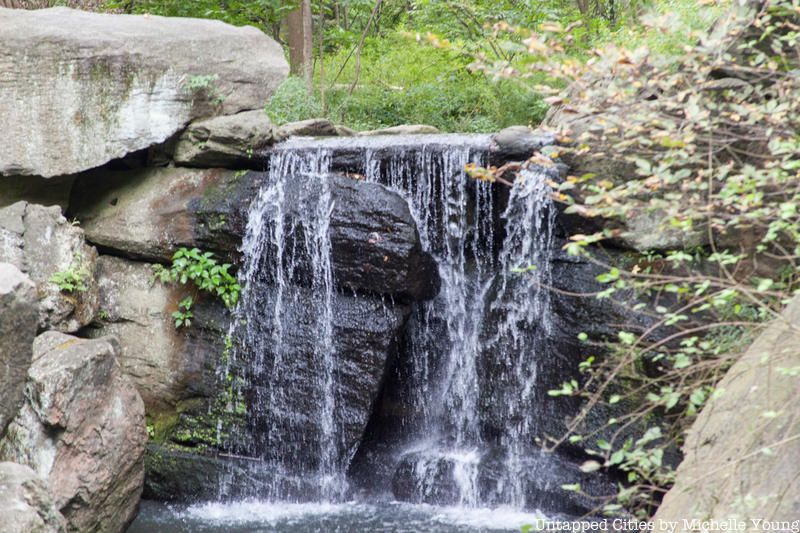
A waterfall in the North End of Central Park
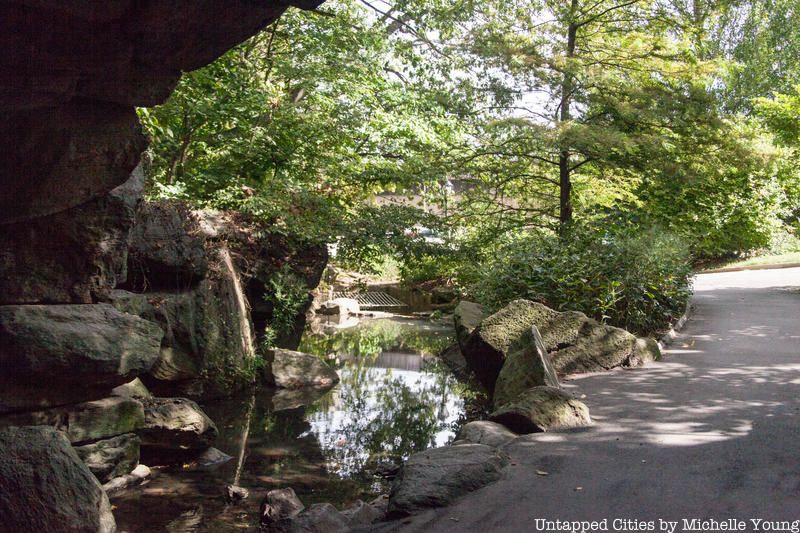
Current view through Huddlestone Arch, back of Lasker Rink and Pool beyond the trees. The stream gets diverted into a culvert under the grate.
After the press event, members of the architecture team, including Christopher J. Nolan, Chief Landscape Architect for Central Park, and Susan T. Rodriguez Architecture in collaboration with Mitchell Giurgola, led tours of the North End to explain the changes coming. A return to the area’s more natural ecology is the main component of the plan, and that necessitates the complete redesign of the rink and pool that has been plagued with issues from poor siting and disrepair. Even before the opening of the Lasker Pool and Rink in 1967, a major flood from overflow of the stream behind the facility delayed the official opening by eight months when the entire mechanical operation had to be rebuilt. The original stream was buried under the rink and later empties out in the Harlem Meer, but inability of the diverted culvert to handle overflow from rain and storms easily floods the back parking lot behind the structure. In addition, the concrete wall and ADA-inaccessible staircase around the building form a physical barrier that often prevents visitors from going deeper into the park.
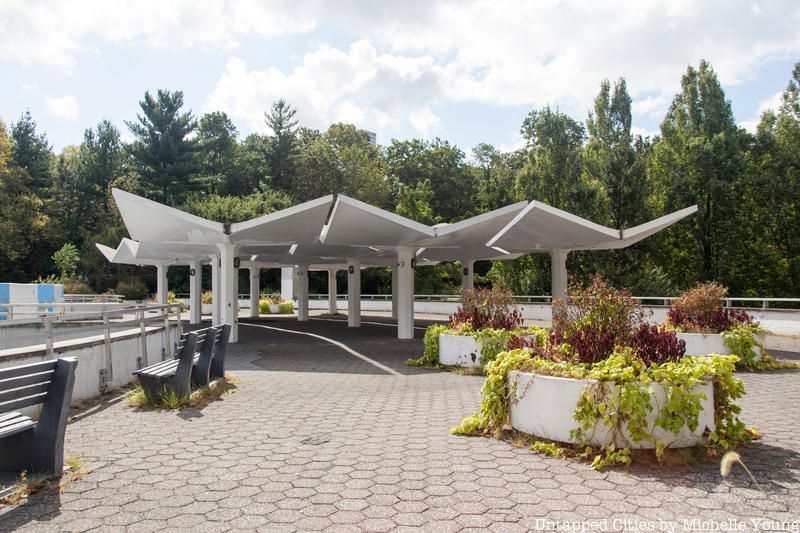
Lasker Rink and Pool, currently
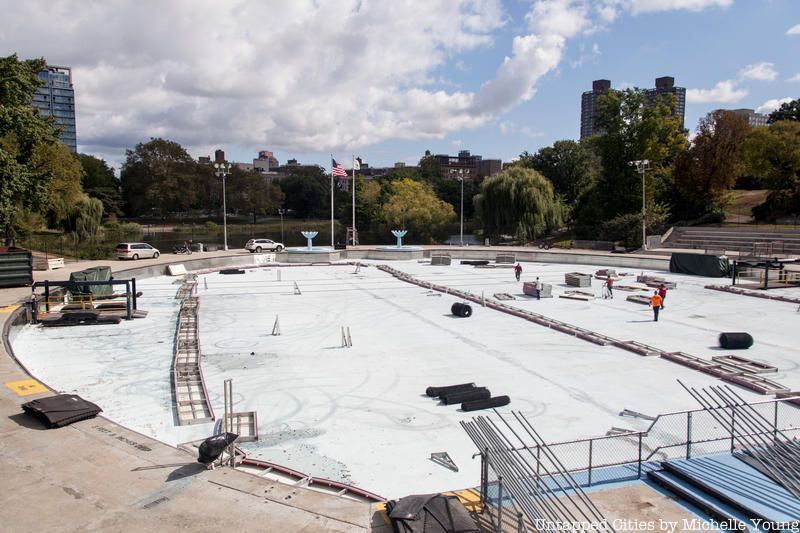
In order to restore the historic and landscape of the Park’s north end, the pool and rink will be shifted east, and turned into a more narrow oval to allow for the daylighting of the stream. A path next to the waterway will be rebuilt, restoring a pedestrian path and re-creating views through the Huddlestone Arch. The pool house will be constructed into a slope in the topography, surrounded by a landscaped berm and topped with a green roof. Those coming from the south will not even see a building at all, if all goes according to plan. The green roof will not only be an environmental boon, absorbing excess rainwater and providing insulation for the building but will be used as a gathering space and lookout point. The pool house will also have stack ventilation through an operable glass facade and high efficiency plumbing, with hopes that various sustainability initiatives and the passive climate control of the building will achieve a LEED Gold rating.
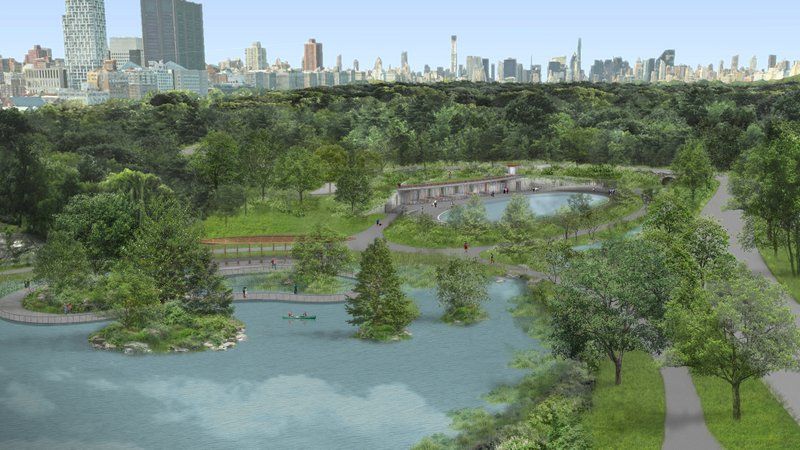
Rendering courtesy Central Park Conservancy
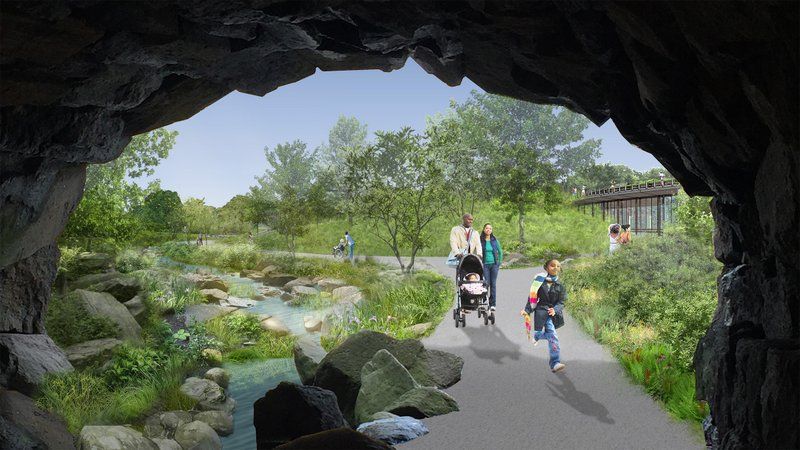
New view through Huddlestone Arch. Rendering courtesy Central Park Conservancy
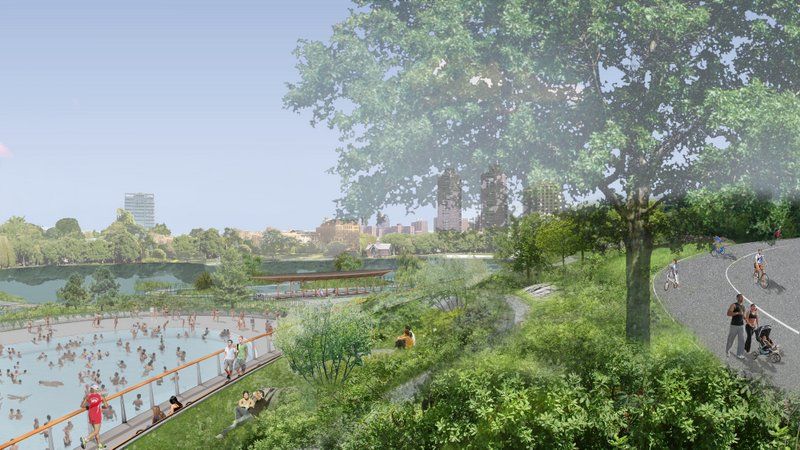
View from atop the pool house. Rendering courtesy Central Park Conservancy.
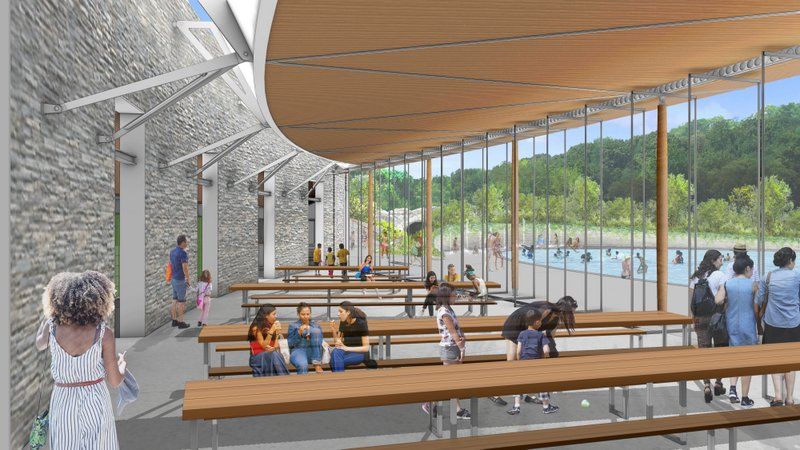 Inside the pool house. Rendering courtesy Central Park Conservancy.
Inside the pool house. Rendering courtesy Central Park Conservancy.
On the Harlem Meer itself, a curved, wooden boardwalk will wrap around the islands allowing for walking, wildlife viewing, and fishing. It will become an ice skating ribbon in the winter. A new open air pavilion on the shore of the Meer will be constructed providing a meeting spot for water programming, which will include canoeing.
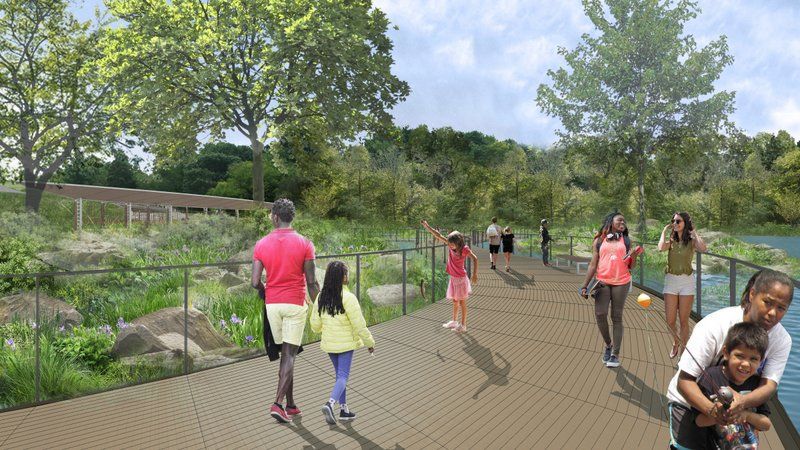
Future boardwalk on the Meer
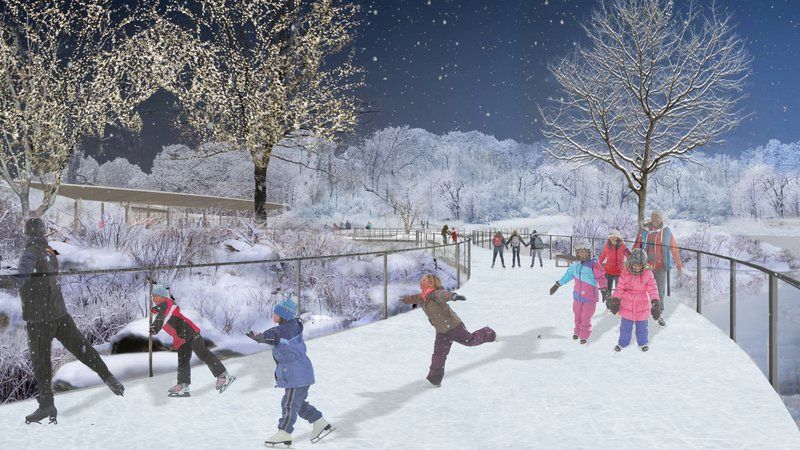
Future boardwalk turned into skating ribbon on the Meer
The Harlem Meer and surrounding areas have come a long way since the 1860s. Work under Robert Moses in the 1930s created hard edges along the shoreline, along with construction of several playgrounds in the surrounding area. In the 1940s, a concrete edge was added to the shore along with steel picket fencing. The Lasker Rink & Pool was the final major disruption to the landscape that made the northern section of the park feel more like a contained community park than a vital portion of Central Park. According to the Conservancy, by the 1970s and 80s, the “disconnected landscapes on either side experienced one of the most significant periods of decline in the Park’s history.” The boathouse had been burned out and was overgrowing with weeds, the Meer was filled with debris, the concrete shoreline was crumbling, and the paths in a state of disrepair. Restoration of the Meer commenced in 1989, the Ravine restored in 2016, and the reconstruction of the pool and rink is the last link in the effort.
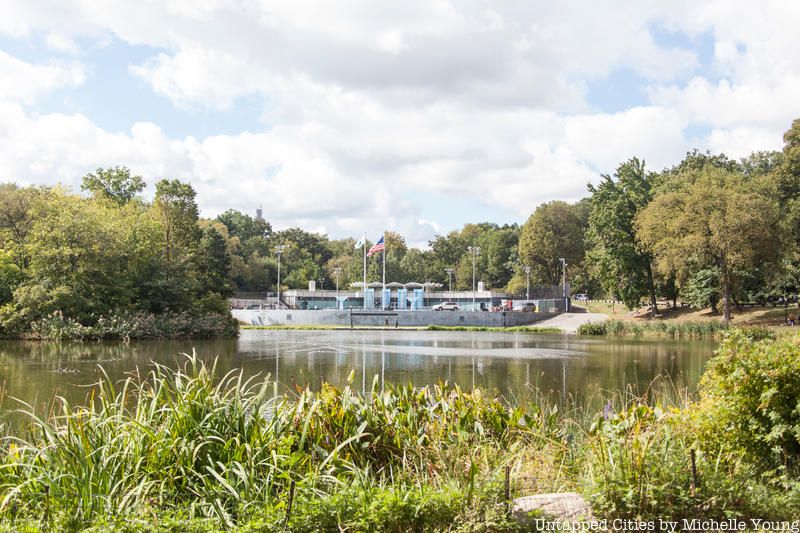
Christopher J. Nolan, Chief Landscape Architect for Central Park who started at the Conservancy in 1989, said that there are two fundamental things about Central Park: “One, that the genius of its design is really quite simple. It’s to be the opposite of the city and two, that people love and need Central Park. A comaittment to the park’s value and connecting us with nature as an antidote to the pressures of urban life is something that is critical today as it was in the 19th century has guided our restoration work for almost forty years and creates a clear vision for this project.” The Lasker Rink & Pool will be in operation until 2021, when the skating rink concession ends and construction can commence on the North End restoration.
Join us for our upcoming tour of the Secrets of Central Park:
Subscribe to our newsletter